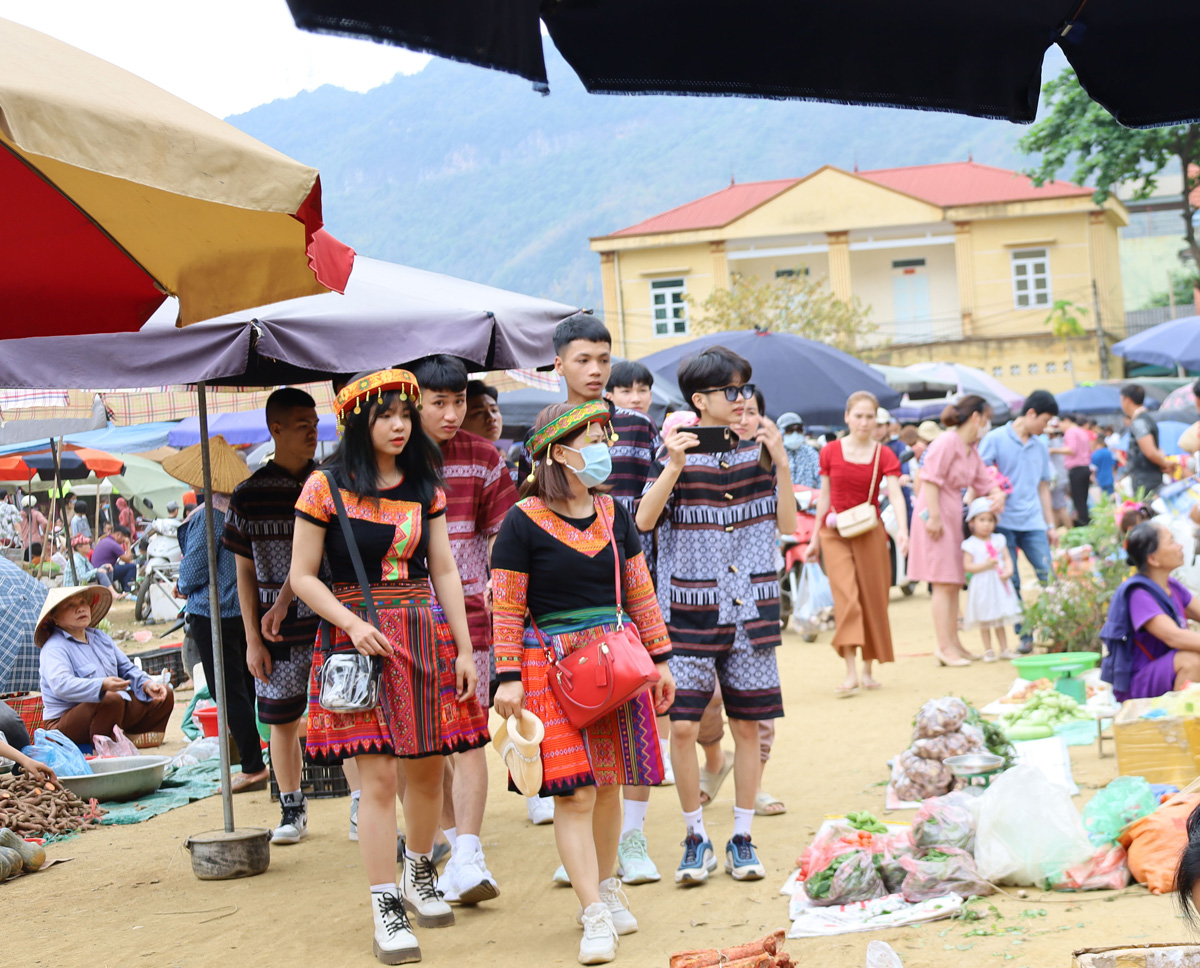
(HBO) – The Mai Chau uplandmarket - a unique tourism product of Hoa Binh province’s Mai Chau district – becomes more and more attractive to holidaymakers, offering tourists a venue to experience daily activities and understand more about traditional culture identities of the locality.

Visitors
are interested in traditional costumes sold at the market.
In the first Sunday of April, people from
the Hang Kia, Pa Co, Dong Tan, Son Thuy, Bao La, Chieng Chau, Mai Ha and Thanh
Son communes of Mai Chau district transport their products or those found in
forests such as orchids, vegetables, bitter bamboo shoots and mountain snails, to the market for sale.
Because loving the natural scenery and people of Mai Chau so much, many
tourists visit the destination not just once.
They said visiting the market, they have a chance to learn more about unique
cultural identities of the locality, and buy agricultural products that
have not been sold in Hanoi.
According to Vice Chairman of the
Mai Chau district People’s Committee Pham Van Hoan, the highland
marketfestival is held every Sunday as part of activities to mark the
southern liberation and national reunification day (April 30) and May Day (May
1), and to stimulate tourism demand.
During the festival, visitors enjoy music
performances imbued with national cultural identity and play popular folk games
such as tu lu, to le, and rope swing.
The festival contributes to introducing and popularising local tourism images,
beauty of local customs and cultural identities of ethnic minorities, thus
attracting more domestic and foreign visitors and further promoting
socio-economic development of the locality./.
The People’s Committee of Lac Son district held a ceremony on April 28 to receive the provincial relic certificate for the ancient rock carving site at Suoi Co stream, located in My Thanh commune.
A special music show titled "The country is in the fullness of joy” has been held at Hoa Binh Square in Hoa Binh city in celebration of the 50th anniversary of the liberation of the South and national reunification (April 30, 1975–2025).
The People's Committee of Lo Son commune, Tan Lac district, has organised the local annual traditional stream fishing festival on April 19 - 20.
As a land deeply intertwined with human history and Vietnam’s millennia-long journey of nation-building and defence, Hoa Binh is often revered for its epic tales and legends.
Residents of Hoa Binh boast a rich cultural identity, reflected in their unique language, traditional attire, customs, and folk melodies – described as "sweet as honey, clear as a mountain stream.”
Lac Son district’s Vu ban town held the 2025 Truong Kha temple festival on April 12–13 (the 15th–16th days of the third lunar month). Since its revival in 2019, the festival has been organised every three years, preserving valuable intangible heritage while meeting the community’s cultural and spiritual needs.



